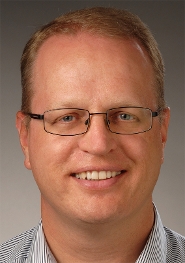
From scarcity to abundance: big data in archaeology
New digital methods and a data explosion are radically changing archaeological research. Karsten Lambers, Associate Professor of Archaeological Computer Science, tells us all about it.
Archaeology is going digital. Is that a recent development?
‘Not entirely. In archaeology we’ve been using quantitative techniques, such as statistics, and computers since the 1960s. But recently, we’ve come to a point where the entire workflow of archaeological research - from acquiring data to analysis, visualisation and publication - is going digital. Computational methods and tools such as image analysis and 3D modelling provide us with new insights. On top of that, an explosion of available data is completely changing the field.’
In what way?

‘Traditionally, archaeologists always had to deal with a scarcity of data, because most of the data from the past is simply not preserved. We are used to making the best out of the little data we have, by really looking at quality and accuracy. But now, with the huge amounts of data that are becoming available, we have to deal with data in a completely different way. We are flooded with messy and heterogeneous data, and that requires a different approach. This is something archaeology is struggling with at the moment. The idea still needs to be digested by some.’
You speak of a data explosion, what kind of data should we think of?
‘There is a trend of digitising old archaeological data, and of linking databases together to make the data more easily accessible. But also, we increasingly make use of data from other fields: data on the climate, soils, flora and fauna of the areas we investigate. Also, we now have high resolution remote sensing data, such as satellite images or LiDAR, which give us an unprecedented quality and quantity of data about the surface of the earth. That is a hugely exciting development, because all this data potentially holds important information about archaeological traces in the landscape. One of the projects I work on is using satellite images to detect archaeological sites in the Alps.’
I imagine this is the kind of research that requires computational methods?
‘Indeed. Instead of manually going over all these images, we have developed algorithms that help us analyse the data. The software automatically detects certain types of archaeological sites in the images and produces probability maps. These maps indicate how probable it is that there is an archaeological site at a given location. And then we can start our fieldwork from there, focussing on these highly probable sites. This makes archaeological research much more efficient.’
Do you collaborate with computer scientists in this kind of research?
‘Yes, both with computer scientists and with experts from the earth sciences. We work with very complex and heterogeneous digital datasets; archaeological and environmental data tend to have very different resolutions and scales. So rather than gathering the data, our main challenge is now to combine it and to analyse it in a meaningful way. In order to do that well, bringing together expertise from different fields is crucial.’
How important is data management in archaeological research?
‘Very important. In the past, especially in the 1980/90s, when archaeology started to use digital tools for data recording, not much thought was given to data management. The data wasn’t stored in ways that would preserve it for decades, often involving software that is no longer available. That is why a lot of data from that era is already lost. Now, finally archaeology has understood what is at stake here. We are now very serious about data management, to make sure that data is stored in safe and easily accessible ways.’
Last September, the new MSc programme Digital Archaeology started under your supervision. What do students learn in that programme?
‘The programme really goes beyond the digital methods that are part of every archaeologist’s education now - such as working with databases and basic statistics. For example, our students learn to develop new tools for data analysis. That’s something quite new: for a long time, we’ve been dependent on tools and software that was developed for other academic disciplines. Using these tools in our field, we often find them insufficient and unsatisfactory. In archaeology we have our own specific research questions, so we really need to start developing our own tools.’
How did you get into digital archaeology yourself?
‘Out of necessity. While I was a student, archaeological field recording was increasingly going digital. Then, during my PhD research, I studied the Nasca lines in the Peruvian desert. I was looking for archaeological features by analysing aerial photographs of the desert, covering an area of more than a hundred square kilometres. I did that in the traditional way, manually analysing all these images. But after spending two years on simply mapping what I saw, I swore to myself that I would never have to do that again. And that’s how I shifted my focus to digital archaeology: I was looking for ways to automate things in order to work much more efficiently.’
Karsten Lambers studied American Anthropology at the University of Bonn (MA 1998) and Prehistoric Archaeology at the University of Zurich (PhD 2005). He held research and teaching positions at ETH Zurich (1999-2004), the University of Zurich (2004), the German Archaeological Institute (2005-2007), the University of Konstanz (2008-2010), and the University of Bamberg (2010-2015). Lambers joined Leiden University’s Faculty of Archaeology in 2015 and is now Associate Professor of Archaeological Computer Science. He recently set up the MSc programme Digital Archaeology.
(JvdB)
This article is part of a series of interviews with researchers from the Leiden Centre of Data Science (LCDS). LCDS is a network of researchers from different scientific disciplines, who use innovative methods to deal with large amounts of data. Collaboration between these researchers leads to new solutions to problems in science and society.
